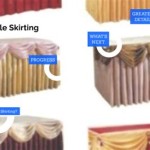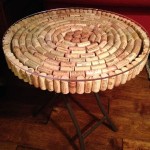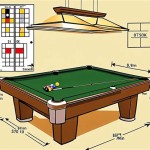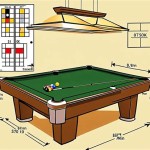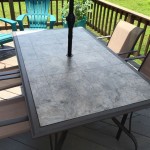How To Refinish a High Gloss Wooden Table Top With Water Marks
Water marks on a high-gloss wooden table top can detract from its beauty. Fortunately, various methods exist to remove these blemishes and restore the table's original luster. This article outlines effective techniques for refinishing a high-gloss table top marred by water marks, ranging from simple solutions to more involved restoration processes.
Assessing the Damage: Before undertaking any refinishing work, it's crucial to assess the extent of the water damage. Superficial white rings often indicate damage confined to the finish. Deeper, darker stains suggest the water has penetrated the wood itself. This distinction will determine the appropriate course of action.
Simple Solutions for Superficial Water Marks: For light, surface-level water marks, several readily available household items can prove effective. One method involves gently rubbing the affected area with a soft cloth dampened with mayonnaise or petroleum jelly. The oils in these substances can sometimes displace the trapped moisture and diminish the appearance of the white rings. Another approach utilizes a mixture of equal parts white vinegar and olive oil. Apply this mixture sparingly to the water mark and rub gently with a soft cloth in the direction of the wood grain.
Heat Treatment for Stubborn Surface Marks: If the simple solutions prove ineffective, a heat treatment can be employed. This method requires caution to avoid scorching the wood. Using a clean, dry iron set on a low setting (no steam), place a thin, cotton cloth over the water mark. Gently iron over the cloth in small circular motions. The heat can help evaporate the trapped moisture and lift the white ring. Check the progress frequently and discontinue if no improvement is observed or if the wood begins to darken.
Abrasive Techniques for Deeper Marks: When water marks have penetrated the wood finish, more aggressive techniques become necessary. These involve carefully abrading the finish to remove the damaged layer. Begin by using a very fine-grit sandpaper (1500-2000 grit) and lightly sanding the affected area in the direction of the wood grain. Regularly wipe away the sanding dust with a tack cloth to assess the progress. The goal is to remove the water mark without excessively thinning the surrounding finish.
Using Abrasive Pastes and Compounds: Specialized abrasive pastes and rubbing compounds, available at automotive supply stores, offer a more controlled approach to removing water marks. These products are designed to smooth and polish surfaces. Apply a small amount of the paste or compound to the affected area and rub gently with a soft cloth, working in the direction of the wood grain. Continue until the water mark disappears. Follow the manufacturer's instructions regarding application and removal.
Refinishing with Lacquer or Varnish: For extensive water damage or when the above methods fail, complete refinishing of the table top may be necessary. This involves stripping the existing finish, sanding the wood smooth, and applying a new coat of lacquer or varnish. Stripping can be accomplished using chemical strippers or by sanding. Always follow the manufacturer's instructions for the chosen stripper or sanding equipment. After stripping and sanding, apply the new finish in thin, even coats, allowing ample drying time between each application. Multiple coats may be required to achieve the desired level of gloss.
Preventing Future Water Marks: Prevention is always the best strategy. Using coasters, placemats, and trivets can significantly reduce the risk of water rings. Regularly polishing the table top with a high-quality furniture polish can also help create a protective barrier against moisture. Address spills promptly by blotting them with a clean, absorbent cloth. Avoid placing hot dishes directly on the table surface, as this can also cause damage.
Professional Restoration: For valuable antique tables or when dealing with extensive or complex water damage, seeking professional restoration services is recommended. Experienced restorers possess the expertise and specialized tools to address complex issues and restore the table to its original condition while preserving its value.
Choosing the Right Approach: The appropriate method for removing water marks from a high-gloss wooden table top depends on the severity of the damage and the individual's comfort level with various refinishing techniques. Starting with the simplest solutions and progressing to more involved methods is generally recommended. Careful assessment, patience, and attention to detail are essential for achieving optimal results and restoring the table's beauty.

How To Refinish A Wood Table And Remove Water Stains Thrifty Decor Diy Organizing

Staining Refinishing A Table Top How To Guide

Staining Refinishing A Table Top How To Guide

Table Top Stain Clear Coat Espresso Gloss Polyurethane Farmhouse Series 4 Of 5

Dining Room Table Makeover Refinishing A Wood Veneer Stacy Risenmay

How Do I Remove Water Spots From A Veneer Table Top Hometalk

Removing Water Spots From A Finish The Wood Whisperer

Staining Refinishing A Table Top How To Guide

How To Refinish A Water Stained Table

How To Remove Watermarks Popular Woodworking


